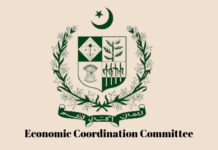For over a century, centralized electricity grids have been the backbone of global energy infrastructure, enabling large-scale power generation and distribution to homes, businesses, and industries. However, technological advancements in solar power and energy storage are rapidly making these grids obsolete. The rise of decentralized energy systems, driven by affordability, efficiency, and resilience, signals a profound shift in how the world produces and consumes electricity.
Despite the global shift toward decentralized energy, policies and regulatory measures in Pakistan have made it increasingly difficult for homeowners and businesses to install and benefit from solar power. The government has imposed net metering restrictions, reducing the financial incentives for feeding excess solar energy back into the grid. Additionally, higher taxes and import duties on solar panels and batteries have increased costs for consumers, discouraging investment in renewable energy. These measures are often driven by pressure from centralized utilities, which see rooftop solar as a threat to their business model. Without significant policy reforms, Pakistan risks lagging in the global transition to clean and independent energy systems.As we will see below, in the wake of advancing technology, these measures will prove futile and will have severe economic costs for a government unaware of emerging realities.
Solar energy has evolved from a niche technology to a mainstream power source, thanks to dramatic reductions in cost and improvements in efficiency. Over the past decade, the cost of solar photovoltaic (PV) modules has plummeted by nearly 90%, making solar one of the most affordable energy sources in many regions.
As manufacturing costs continue to decline, solar power will become even more accessible, enabling households, businesses, and communities to generate their own electricity independently of centralized grids. By Mordor Intelligence estimates, Pakistan’s rooftop solar installed capacity is 2.2 GW and is expected to increase to 9.53 GW by 2029.
While solar energy’s affordability has made it a viable alternative to traditional power sources, its intermittent nature has historically limited its adoption. However, rapid advancements in energy storage technology are addressing this challenge, making it possible to store excess solar energy and use it when needed. The energy storage advancements will have an even more profound impact on the nature of the grid than solar itself. This is because, with low-cost storage, the need for peak power from centralized grid and other volatility-based grid needs will decline even further, making users more self-reliant on their own or in smaller communities and ecosystems.
Lithium-ion battery costs have fallen by over 85% in the past decade, making home and commercial battery storage systems increasingly affordable. Companies like Tesla, BYD, and CATL are developing high-capacity, long-duration batteries that can store solar energy for hours or even days. Additionally, emerging technologies like solid-state batteries, flow batteries, and iron-air batteries promise even lower costs and longer storage durations, further diminishing the need for centralized power plants.
The shift caused by a double blow of solar and storage will disrupt the conventional utility model, where centralized power plants generate electricity that is transmitted over vast distances to consumers.
As decentralized energy systems gain traction, traditional utilities are being forced to adapt. Some are embracing the shift by investing in distributed energy resources (DERs) and developing new business models that accommodate consumer-owned solar and storage. Others are resisting change, lobbying for regulatory barriers that limit the adoption of decentralized energy solutions. This has been the response of the Government of Pakistan thus far. Though the government is bound by its international financing and other multilateral commitments to allow for the expansion of renewable energy and uphold mandates like net metering; it is using a range of tools to discourage the conversion to rooftop solar. More importantly, there has been a tussle between the federal government sitting on a redundant national grid model, and provincial governments, driven by public demand and aspirations in the domain of renewable energy domain.
No matter how hard the bureaucratic infrastructure tries, the momentum behind solar and storage is undeniable. Governments and policymakers worldwide are implementing incentives and regulations that support renewable energy adoption, recognizing the economic and environmental advantages of a decentralized energy system. It is time that the government starts planning for this future and starts writing off its redundant assets in the national grid. The whole model of transmission and distribution needs to be overhauled.
And just when the solar/storage combo is enough to make the traditional grid redundant, another key technology contributing to the decentralization of energy is fuel cells. Fuel cells generate electricity through electrochemical reactions, typically using hydrogen, and offer a clean, efficient, and scalable energy source. Unlike traditional combustion-based power generation, fuel cells produce electricity with minimal emissions, making them an attractive option for both residential and commercial applications. As hydrogen production costs decline and infrastructure improves, fuel cells will complement solar and battery storage systems by providing continuous, on-demand power. This integration further reduces dependence on centralized grids and enhances the reliability of decentralized energy networks.
As solar power becomes more efficient and storage costs continue to decline, the traditional centralized grid model will become increasingly obsolete. In its place, a decentralized energy landscape will emerge, where individuals, businesses, and communities generate, store, and share electricity independently.
This transition will not happen overnight, but the trajectory is clear. The energy sector is undergoing a fundamental transformation, driven by technology, economics, and the need for a more resilient and sustainable power system. The days of large, centralized grids dominating electricity distribution are numbered. In their place, a new paradigm of energy independence, local resilience, and environmental sustainability is taking shape—one powered by the sun and stored for whenever it’s needed. Policymakers in Islamabad are unaware of this emerging reality and are operating in their old energy paradigm. This has all the makings of a major public sector financial collapse.























